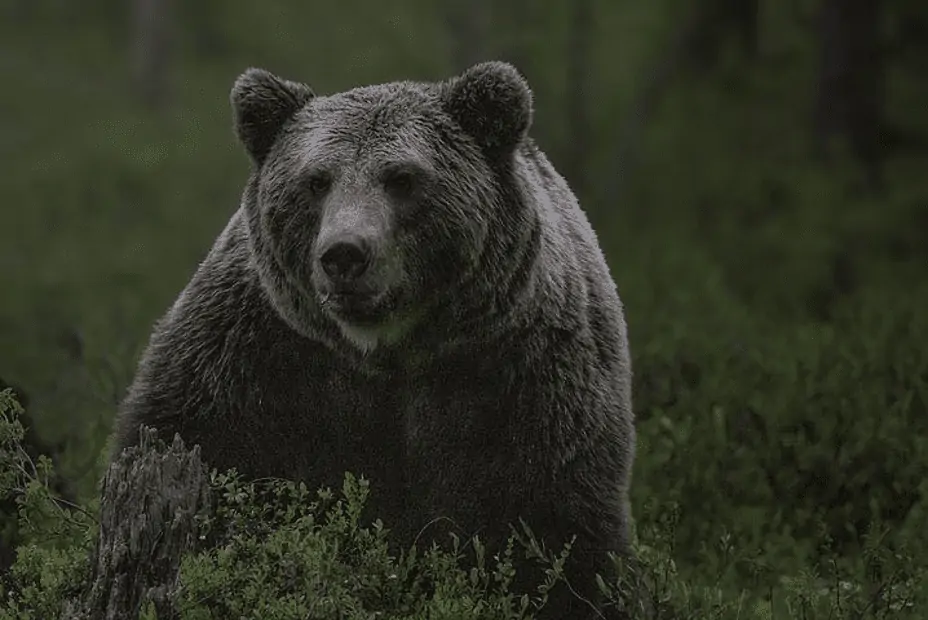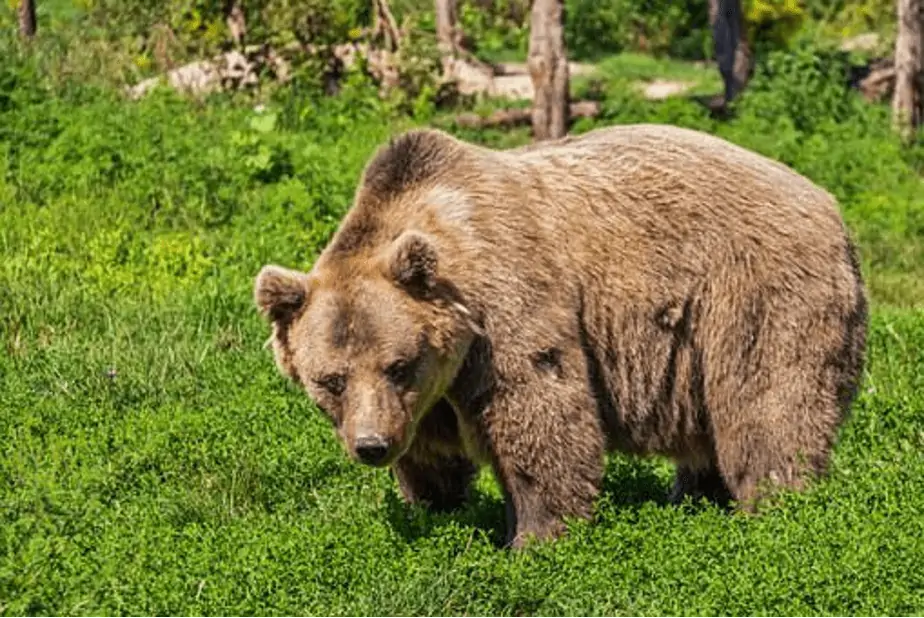What to Do If You Encounter a Bear With Your Dog
A walk or hike with your dog is a great activity and one of the best ways to experience nature. But connecting with nature can bring with it encounters with wildlife, including bears, which can be thrilling but dangerous too.
It may be worthwhile to remember that just as you don’t want an encounter with a bear, they don’t want one with you either.
Taking a few precautionary measures and following some tips can help you and your pet canine avoid dangerous encounters with black bears and allow you to enjoy the outdoors to the fullest.
Typically, when a bear is in its territory or has ventured into your yard looking for food, the biggest problem for the bear is an unleashed dog. A dog may both attract and keep bears away.
When a dog smells the presence of a bear, it will alert you about this, which can avert a possible encounter. Further, when a bear wandering near your home or campsite hears a dog barking, this can discourage the bear from approaching.
But the problem is that when an unleashed dog chases a bear into the woods, it can turn back and lead the bear to the trail or the campsite, right back to you, where the bear can attack you or the people around you.
In this article, we’ll discuss all the information that is important to know about what to do if you encounter a bear with your dog.
Understanding Bear Behavior

Bears are generally wary of humans and avoid any type of close encounters with them and bear attacks are very rare.
Typically, a bear will attack to defend their cubs or food. Violent bear attacks are very rare and usually occur only in remote areas where bears don’t have any exposure to humans.
An understanding of bears and their behavior is good to know because this can help you in case you are out on a hike with your dog and you happen to meet a bear on the way.
- Bears are very shy animals and typically avoid any interaction with humans and dogs and unless they are provoked, bears never engage. Adult bears may not interact with humans, but the cubs may, which may lead to a dangerous encounter.
- While they can be seen any time of the day/night, bears are generally more active at dusk and dawn.
- Usually, bears fiercely defend their food source be it berries, dead animals or fish.
- Bears are generally afraid of new things but then become curious and come closer to inspect objects, noises and odors to see if they are edible or can be played with. When bears are curious, they tend to stand up on their rear legs, which humans often interpret as aggression.
- Bears have a very keen sense of smell, in fact, better than any other animal.
- Although there is a distant genetic link between bears and dogs, yet bears dislike dogs.
- When they are busy with something, bears aren’t aware of the happenings around them. This makes them quite susceptible to surprise encounters.
- If you get too close, the bear may “bluff charge,” especially if the female is with her cubs.
- Typically, bears follow their prey, and this makes them quite dangerous for dogs because when the dog runs, the bear may chase them.
- Black bears can seriously injure or even kill humans or dogs when threatened, but they are more likely to avoid an encounter and climb a tree. Grizzlies, on the other hand, are not good climbers, and so they are more likely to stick around and defend themselves.
How to Avoid an Encounter between Your Dog and a Bear
Humans, as well as bears, are active in outdoor spaces all year round. Often bears can be seen around places that have plenty of food, such as berry patches, or in cool, shady areas where they can rest, such as water sources.
Bears also use the same forest paths and trails as humans and if you’re walking on one of these paths with your dog and encounter a bear, then here are some tips on what you can do to prevent an encounter between the bear and your furry canine:
- Understand the rules of how to recreate when you’re in bear country, especially with your dog.
- Familiarize yourself with the area and the wildlife. Avoid running with your dog as potential predators view running as provocative, and this can trigger a bear’s instinct to chase and attack you.
- Always stay on the hiking trail as bears generally avoid busy trails. Avoid any closed trails and always be vigilant of your surroundings when you’re dispersed camping.
- Always carry bear spray with you.
- Be aware of your surroundings and keep an eye for signs of bears such as tracks, bear scat, scratch marks, disturbed vegetation, etc. and avoid taking your dogs into such areas.
- When out on a walk, keep your dog leashed at all times, and don’t allow them to chase a bear if you encounter one.
- Keep an eye on your dog at all times and never let them unattended or get out of your sight.
- Make your presence known. Talk or sing loudly when walking. You can wear a bear bell or put one on your dog’s collar.
- Always try to hike in groups because the noise and activity will keep the bear away.
- Bears are most active during dusk and dawn, so it is best to hike during the day.
What to Do in Case of a Bear Encounter with Your Dog

When hiking with your dog, if you do encounter a bear, here are some rules that you can follow to ensure that both your dog and you escape unharmed:
- Leave quietly without attracting the bear’s attention if he has not seen you. Turn slowly and walk away. Running could encourage the bear to pursue you.
- If the bear has seen you, then keep your dog very close to you, turn slowly and return the same way that you came. Give the bear as much space as possible and if possible, take a detour.
- If you’re very close to the bear and there’s just no way to avoid an encounter, then stand up tall and make yourself appear as big as possible. If the bear moves towards you, make a lot of noise and wave your hands.
- Avoid making any eye contact with the bear, as this could be misconstrued as aggression. Back away from the bear and also ensure that the bear has an escape route.
- If all the above steps fail, always carry bear spray with you when you get out. Learn how to use the bear spray properly. If the bear attacks, then use the bear spray.
FAQs
Are Bears Afraid Of Dogs?
There are many reasons why bears are naturally afraid of dogs. Bears are aware that a dog is associated with humans and therefore may pose a threat. A dog’s bark can also startle a bear and aggravate it. In addition, dogs are much faster than bears and can easily outrun them. For these reasons, it’s not surprising that bears would want to avoid contact with dogs whenever possible.
Can Dogs Sense Bears?
Yes, a dog’s sense of smell is 10,000 – 100,000 times better than humans and can detect and alert you of a nearby bear before you even know it’s there. Bears have a very keen sense of smell as well, and can often smell a dog from miles away. For this reason, bears are often afraid of dogs because they can detect them long before the bear is aware of their presence.
Final Thoughts
If you’re out hiking with your dog in bear country, always follow the rules. But it is best for you and your pet to avoid a bear encounter in the first place.
And we hope that after reading our guide, you have all the information you need to keep both you and your canine safe when camping or hiking.






